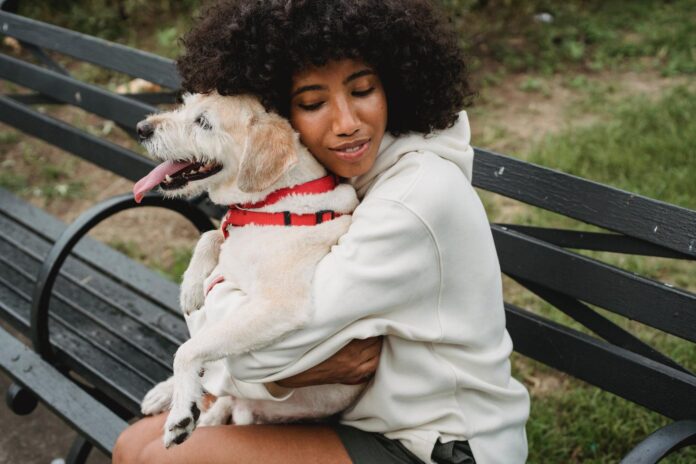
When it comes to walking your dog, choosing the right equipment can make a significant difference in your furry friend’s comfort and safety. The two most popular options for dog walking are neck collars and chest harnesses. In this article, we will compare the effects of neck collars and chest harnesses on dogs, considering various factors like comfort, safety, training, and health.
In the realm of canine accessories, the ongoing debate between neck collars and chest harnesses centers around their respective effects on dogs. This comparative exploration delves into how these two popular restraint devices influence the well-being, behavior, and overall comfort of our four-legged friends during walks.
Neck collars, a traditional choice, exert pressure around the neck area, often raising concerns about potential discomfort and impact on a dog’s throat and trachea. On the other hand, chest harnesses distribute the force across the chest, potentially offering a gentler means of control and minimizing the risk of injury. This study aims to shed light on whether the choice between these accessories has discernible effects on a dog’s physical health and behavior.
Comfort

One of the primary concerns when choosing a dog walking tool is the comfort of your pet. Neck collars, which encircle a dog’s neck, can cause discomfort or even injury when used improperly. If your dog pulls on a neck collar during walks, it can put pressure on their neck, potentially leading to choking or injury. Small-breed dogs, in particular, are more susceptible to this risk.
On the other hand, chest harnesses are designed to distribute the force evenly across a dog’s chest and shoulders. This not only reduces the risk of injury but also makes walks more comfortable for your furry companion. Dogs, especially those that pull or have respiratory issues, tend to benefit from harnesses.
If you have a dog that tends to pull on the leash, a chest harness may be a more comfortable option. The dog harness and lead set discourage pulling and provide better control over your dog’s movement, making the walk more enjoyable for both you and your pet.
Safety
Safety is paramount when choosing the right equipment for your dog. Neck collars, while still popular, can pose certain risks. Dogs that pull forcefully on a collar can experience neck injuries or, in extreme cases, tracheal damage. Additionally, if a dog manages to slip out of their collar, they can run into traffic or other dangerous situations.
Chest harnesses, by contrast, provide better control and reduce the risk of injury. The harness distributes the force evenly across the chest and shoulders, minimizing strain on the neck. It also makes it more difficult for dogs to escape, offering extra security during walks.
In terms of safety, chest harnesses are generally the better choice, particularly for larger or more excitable dogs. For smaller dogs or those that don’t pull, a well-fitted collar may still be a safe option, but it’s crucial to ensure that the collar is snug and doesn’t slip over the dog’s head.
Training

Training your dog is a crucial aspect of pet ownership, and the choice between a neck collar and a chest harness can impact training efforts. Collars can be useful for teaching basic commands like “sit” and “stay,” but they are not the best choice for leash training, especially for dogs that pull. When a dog pulls on a collar, it can reinforce the behavior as they continue to receive tension in response to their actions.
Chest harnesses, on the other hand, are excellent tools for leash training. The even pressure distribution discourages pulling, making it easier to teach your dog to walk on a loose leash. Chest harnesses provide better control over your dog’s movement, allowing for more effective training sessions.
For puppies and dogs in the early stages of training, a chest harness is often recommended. Once your dog has learned to walk politely on a leash, you can consider transitioning to a collar for specific commands or activities.
Health
The long-term health of your dog should also be a significant consideration when choosing between a neck collar and a chest harness. Neck collars can have adverse effects on a dog’s health, particularly if they frequently pull on the leash. Chronic pressure on the neck can lead to injuries and exacerbate existing health issues, such as tracheal problems or eye conditions.
Chest harnesses are generally gentler on a dog’s health. By distributing pressure more evenly, they reduce the risk of neck and tracheal injuries. This makes harnesses a better choice for dogs with pre-existing health concerns, especially those that affect the neck or throat.
For brachycephalic breeds like Pugs or Bulldogs, which already have breathing difficulties, a chest harness is highly recommended. It helps reduce the strain on their respiratory system and minimizes the risk of exacerbating breathing problems during walks.

Conclusion
In the debate between neck collars and chest harnesses for dog walking, it’s clear that chest harnesses have several advantages when it comes to comfort, safety, training, and health. While neck collars may still have their place for certain situations, such as training specific commands or activities, chest harnesses are generally the better choice for everyday walks, particularly for dogs that pull on the leash or have pre-existing health issues.
When selecting a harness, make sure to choose one that fits your dog properly. A well-fitted harness ensures that it functions as intended and maximizes your dog’s comfort and safety. Always follow the manufacturer’s instructions for sizing and fitting, and consider consulting with a professional dog trainer or veterinarian for additional guidance.
Ultimately, the best choice for your dog will depend on their individual needs, size, and behavior. By considering the factors discussed in this article, you can make an informed decision that will contribute to your dog’s overall well-being and enjoyment during walks.











